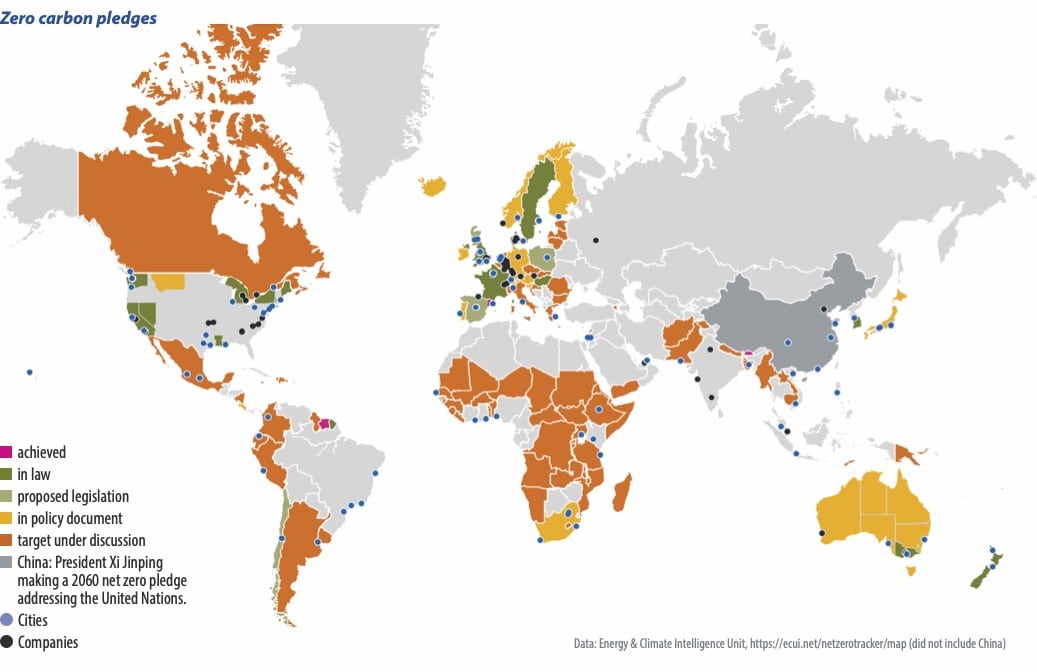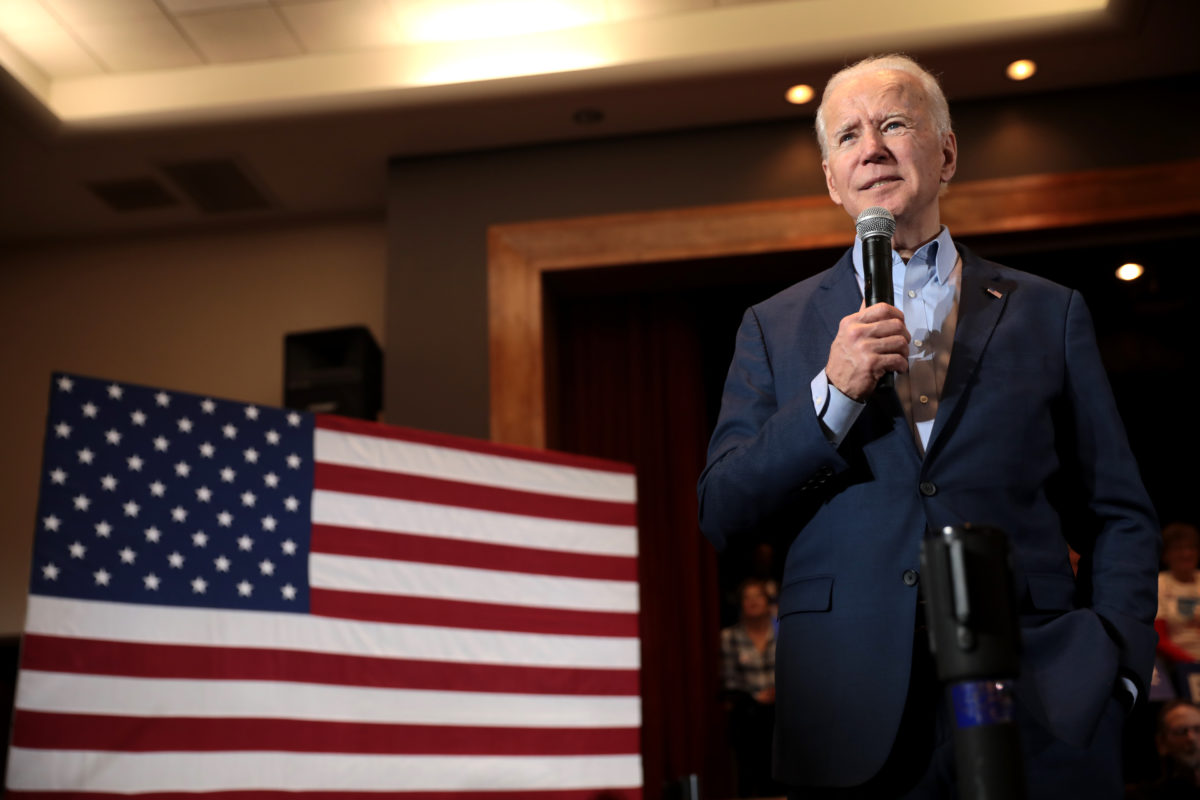From pv magazine 12/2020
The U.S. election
Although President-elect Joe Biden won’t take office before the end of 2020, the U.S. election is surely one of the year’s defining events. And if Democrats can win the Senate, a U.S. President Biden could drive enormous change in renewable energy policy and the energy transition. But if the Democrats lose the Senate, there’s still progress to be made.
Barring a coup or civil war, Biden will be inaugurated on January 20, 2021. But the full extent of Biden’s presidential power won’t be known until the results of two Georgia Senate runoff races are decided in early January. If Democrats win both of the Senate seats, the Senate will be tied, with Vice President-elect Kamala Harris holding the tie-breaking vote. That will place the Senate in Democrat hands, putting Biden in a decidedly strong position to enact his unprecedented US$2 trillion climate plan and carbon emissions target.
The first 100 days
With or without the support of the Senate, expect to see Biden issue Executive Orders on day one of his term, starting with the U.S. rejoining the Paris Climate Agreement.
Other likely Executive Orders in the first 100 days will be a negation of many of President Trump’s orders regarding industrial pollution regulations, automobile and appliance efficiency standards, and the opening of federal lands to oil and gas extraction. It will be a radically different direction for energy and climate policy.
While the Trump administration’s refusal to concede the race is hobbling the peaceful and secure transfer of power, the Biden team is proceeding with the transition as well as it can. Biden has named the members of his energy transition team, which is led by Arun Majumdar, a founding director of ARPA-E and a potential candidate for secretary of energy. Other members of the team include climate scientists, policymakers, and experts in carbon capture, utilization, and storage. This team suggests that the energy agenda will be driven by science rather than coal apologists and fossil-fuel lobbyists. It also suggests we’ll be hearing a lot more about carbon capture in the next four years.
Breaking through to Republicans
Even without a Senate majority, Biden could win Republican support for energy employment and infrastructure investments – employment and recovery are bipartisan issues, as is R&D in grid technologies. A coronavirus relief bill would be one of the first pieces of legislation pursued by a Biden administration and would contain energy and infrastructure initiatives. With some compromise, it could win bipartisan support.
Abby Hopper, president of U.S. solar trade group SEIA, has said that the best policy for getting solar through the economic and health crisis is making the investment tax credit (ITC) refundable. Dan Shugar, CEO of single-axis solar tracker manufacturer Nextracker, in testimony to Congress, also suggested that Direct Pay for the ITC in lieu of a tax credit was the right policy – as well as an ITC step-down extension, and the reduction or removal of the 201 and 301 tariffs. Hopper is “optimistic about next year.”
By Eric Wesoff
Carbon-neutral pledges proliferate
This year has seen an increase in countries, states, regions, cities, and companies committing to a zero-carbon future. The majority aim to achieve this by 2050, but one of the biggest additions to that list this year, China, won’t get there before 2060.

Some 823 cities, 100 regions, and 1,500 companies have pledged to go carbon-free within the next three decades. That is a remarkable feat, compared with where things started in 2020. The year began with just 100 cities, 11 regions and 500 companies having made carbon-related pledges.
Beyond nation states
Regions matter, especially where central governments have been hesitant about climate protection. While U.S. President Trump took the United States out of the Paris Agreement, Washington state, Louisiana, and Michigan have all committed to a zero-carbon future. In North America, 60% of the population is already under zero-carbon commitments, including half of the United States, thanks to regions.
The New Climate Institute and the University of Yale based Data-Driven Envirolab issued a report on this development in September, stipulating that the cities and regions which now have zero-carbon pledges generate combined carbon emissions greater than those of the United States. All the companies under such regulations comprise just over half of the U.S. GDP of $11.4 trillion.In Asia, more than 160 cities and 30 regions have joined the club. This includes Australian states New South Wales and Victoria. Japan and South Korea also made national pledges this year, showing regional leadership.
Even before member states ratify the EU’s 2050 target, 36% of the bloc’s population is governed by such rules. These pledges matter, as they remove the arbitrary nature of the decisions that govern renewables deployment. The industry has complained of boom-and-bust cycles and the lack of long-term planning. By now, governments representing four billion people have committed to a 30-year plan for the solar industry to build on. Sleeves up! A new year is coming.
By Marian Willuhn
Watch out for the next two 2020 solar PV trends tomorrow.
This content is protected by copyright and may not be reused. If you want to cooperate with us and would like to reuse some of our content, please contact: editors@pv-magazine.com.



There should be a rule stating the Wp per m² for PV-modules!!